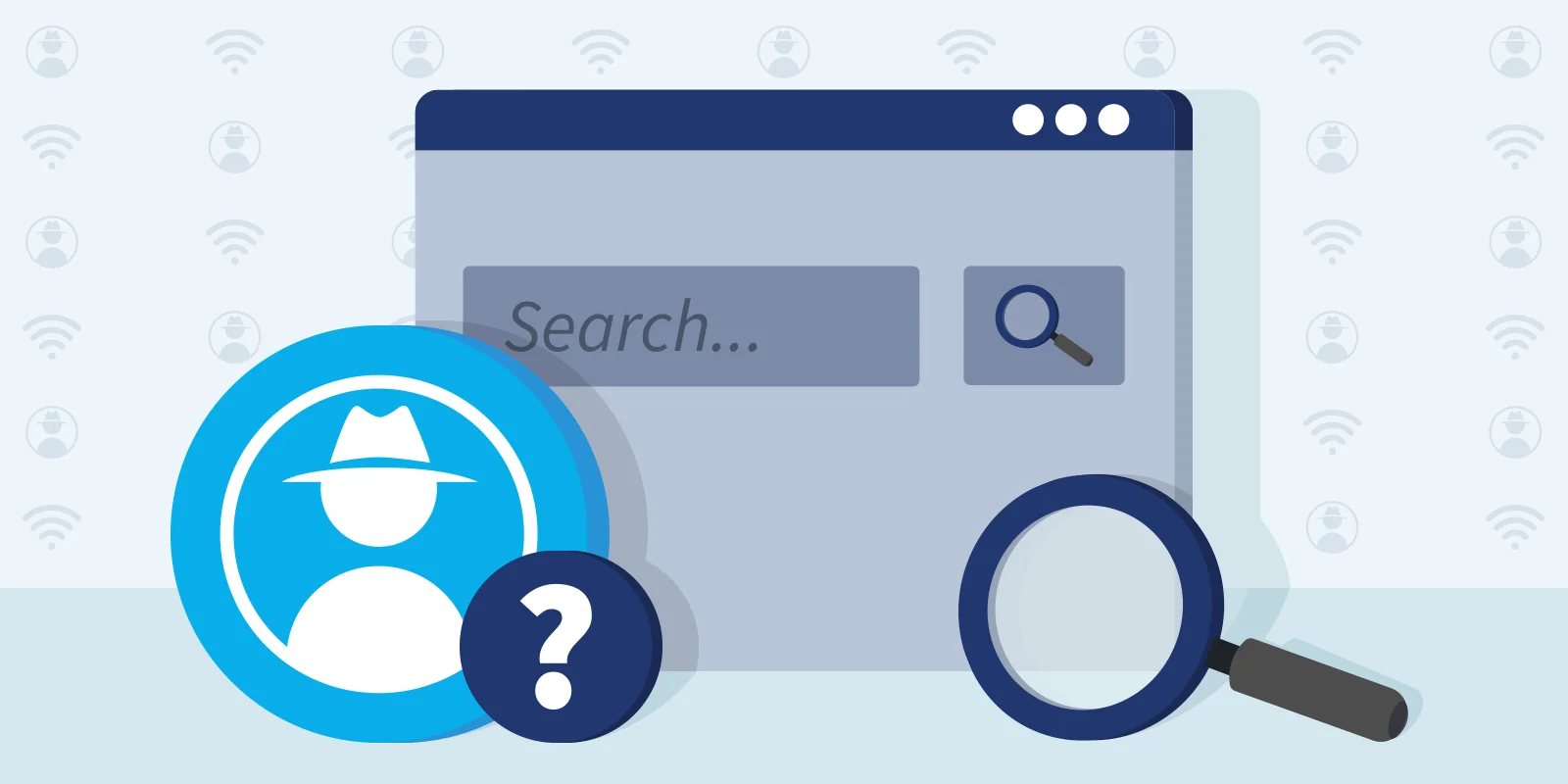
- What is Incognito Mode?
- How does Incognito Mode work?
- How can you activate Incognito Mode across different browsers?
- Can your online activities be tracked when using Incognito Mode?
- Does Incognito Mode hide your IP addresses?
- Why should you consider using Incognito Mode?
- Advantages and limitations of Incognito Mode
- Conclusion
In the digital age, privacy has become a paramount concern for many internet users. Incognito mode, also known as private browsing, is a feature found in most modern web browsers designed to offer a degree of privacy when navigating the internet.
What is Incognito Mode?
Incognito mode is a feature available in most web browsers designed to provide a more private internet browsing experience. When you open an incognito window, the browser creates a temporary session that is separate from the main browsing session. This session does not save your browsing history, cookies, site data, or information entered in forms once the window is closed.
The essence of incognito mode lies in its ability to allow users to browse the internet without leaving traces of their activity on the device they are using. This is particularly useful when using shared or public computers, as it prevents subsequent users from viewing your browsing history or accessing personal data that you might have entered during your session.
However, it's important to understand that incognito mode only offers privacy from other users of the same device. It does not hide your browsing activity from external entities such as internet service providers, employers, or the websites you visit. Additionally, it does not protect against internet threats like malware or enhance the security of your online connections.
How does Incognito Mode work?
Incognito mode functions as a tool that offers a level of privacy by letting you browse the internet as if it's your first visit to each website. When activated, it prevents websites from recognizing your past visits; there are no pre-saved cookies, no automatic log-ins, and no pre-filled forms. This means each website appears as if you're a new visitor.
However, it's crucial to note that while incognito mode stops the storage of data on your device, it does not render you invisible on the web. If you log into any personal accounts while using incognito mode, the session will temporarily retain data, which can be used by websites and advertisers to gather information during your visit. This data is not saved after you close the session unless you have modified settings to allow certain data retention, like third-party cookies.
By default, incognito mode blocks third-party cookies, reducing targeted advertising and potentially affecting how websites function.
How can you activate Incognito Mode across different browsers?
The steps to enable incognito mode vary slightly depending on the web browser you are using, but the overall process remains largely consistent. Here’s a step-by-step guide for several popular browsers:
Google Chrome
- Launch your Google Chrome browser.
- Click on the three vertical dots in the upper right corner of the browser window.
- From the dropdown menu, choose 'New Incognito Window'. Alternatively, you can use the keyboard shortcut Ctrl+Shift+N (on Windows) or Cmd+Shift+N (on macOS) to open a new incognito window directly.
Mozilla Firefox
- Start your Mozilla Firefox browser.
- Click on the three horizontal lines in the upper right corner.
- Select 'New Private Window' from the menu. The keyboard shortcut Ctrl+Shift+P (on Windows) or Cmd+Shift+P (on macOS) also works to open a private window quickly.
Safari
- Launch Safari on your device.
- Go to the File menu at the top of the screen.
- Click on 'New Private Window' to start your private browsing session. You can also use the shortcut Cmd+Shift+N on macOS.
Microsoft Edge
- Start the Microsoft Edge browser.
- Click the three horizontal dots in the upper right corner.
- Choose 'New InPrivate Window' from the menu. The keyboard shortcut Ctrl+Shift+N will accomplish the same task.
Opera
- Launch the Opera browser.
- Click on the Opera logo in the upper left corner.
- From the drop-down menu, select 'New private window'. You can also use the shortcut Ctrl+Shift+N for Windows or Cmd+Shift+N for macOS.
After you open an incognito or private window, your browser will typically display a message explaining what is protected and what isn't in this mode.
Can your online activities be tracked when using Incognito Mode?

Online tracking involves the use of analytics tools and other software to gather data about visitors to a website. This data collection helps companies create detailed online profiles of users, often referred to as a digital fingerprint. This fingerprint encompasses a range of information, including details about your operating system, browser specifications, geographic location, timezone, language preferences, and even the hardware characteristics of your device. Such data is collected via scripts that run seamlessly in the background of many websites, which are integral not only for tracking but also for the basic functionality of these sites.
However, the utility of tracking for website functionality raises an important question: why might it be considered problematic? The answer lies in the precision with which these trackers can identify individuals. They can pinpoint users with remarkable accuracy, which means that your browsing sessions may not be as private as you would hope, even when using incognito mode. The implications of such tracking are multifaceted:
- Ad targeting: Advertisers often use tracking data to understand your online behavior, allowing them to bombard you with highly targeted and potentially invasive advertising.
- Dynamic pricing: Some e-commerce platforms employ tracking data to offer different prices based on your browsing history and habits. For instance, you might notice higher prices on flights or hotels if you've searched for them multiple times.
- Data vulnerability: Numerous websites amass significant amounts of personal data. Should this information be compromised, it could be accessed, utilized, or sold by unauthorized third parties or data brokers.
Furthermore, even actions like blocking third-party cookies offer limited protection. Engaging with services like Gmail, Facebook, or Amazon while signed in allows these platforms to refine their profile of you, tailoring the content and potentially the pricing they present based on the detailed fingerprint they've compiled.
Thus, while incognito mode provides a layer of privacy by not saving your browsing history locally, it does not shield you from online tracking technologies that can identify and track your activities across sessions.
Does Incognito Mode hide your IP addresses?

No, incognito mode does not hide your IP address. When you use incognito mode, your browser does not save your browsing history, cookies, site data, or information entered in forms on your device. However, it does not affect the way websites, your internet service provider (ISP), or any network administrators can view your IP address.
Your IP address remains visible to these entities, which means they can still track your location and the sites you visit. For those looking to mask their IP address to enhance privacy or bypass geo-restrictions, using a Virtual Private Network (VPN) or a proxy service is a more effective solution. These tools reroute your internet traffic through a server in a different location, hiding your real IP address from websites and ISPs.
Why should you consider using Incognito Mode?
Incognito mode, or private browsing, offers a level of confidentiality that distinguishes it from a standard browsing session. Once you close an incognito window, neither your browser nor the sites you've visited retain any memory of your activity. This temporary anonymity is beneficial in several scenarios.
For example, incognito mode enables you to log into multiple accounts at the same time. This is particularly useful for individuals who wish to maintain a clear separation between their work and personal online activities. If you’re using a public or shared device, opening an incognito window can safeguard your privacy because it ensures your browsing history and searches are erased when you close the window.
Private browsing is also ideal for conducting sensitive searches that you prefer to keep private, such as searching for a surprise gift or looking up information related to personal health issues.
Moreover, many people use incognito mode to potentially secure better deals on high-demand items like flights and hotel bookings. Since websites do not recognize you as a returning visitor in incognito mode, they are less likely to display increased prices based on your previous searches.
Advantages and limitations of Incognito Mode

Pros of Incognito Mode
- Privacy on shared devices: One of the most significant benefits of incognito mode is the privacy it offers on shared computers or devices.
- Multiple account management: Incognito mode allows users to sign into multiple accounts on the same website simultaneously.
- Avoiding tracking and personalization: Since incognito mode doesn’t store cookies past your session, it can help prevent websites from tracking your browsing habits.
Cons of Incognito Mode
- Limited privacy: While incognito mode offers privacy from other users on the same device, it does not protect users from all forms of tracking.
- False sense of security: Many users mistakenly believe that incognito mode offers complete anonymity and security, which is not the case. It does not encrypt your traffic, and it's not a replacement for a secure VPN service.
- No protection against malware: Incognito mode does not provide any added protection against viruses, malware, or other online threats. Users still need to ensure they have proper antivirus software and are cautious about their online activities.
- Inconvenience in functionality: While the privacy features of incognito mode are beneficial, they can also be inconvenient. For example, it does not save passwords or autofill forms, which can make frequent logins more cumbersome.
Conclusion
While incognito mode provides a valuable layer of privacy for users looking to keep their browsing history private on shared devices, it is not a comprehensive solution for complete online anonymity or security. Incognito mode effectively prevents local storage of browsing data, making it suitable for situations like managing multiple accounts or avoiding personalized ads and dynamic pricing. However, it does not shield your activities from external observers such as internet service providers, employers, or the websites themselves.
For those seeking greater privacy and security, additional measures should be considered. Tools like VPNs can encrypt your internet connection and hide your IP address, while secure browser extensions can help block trackers and enhance privacy.




Comments 0